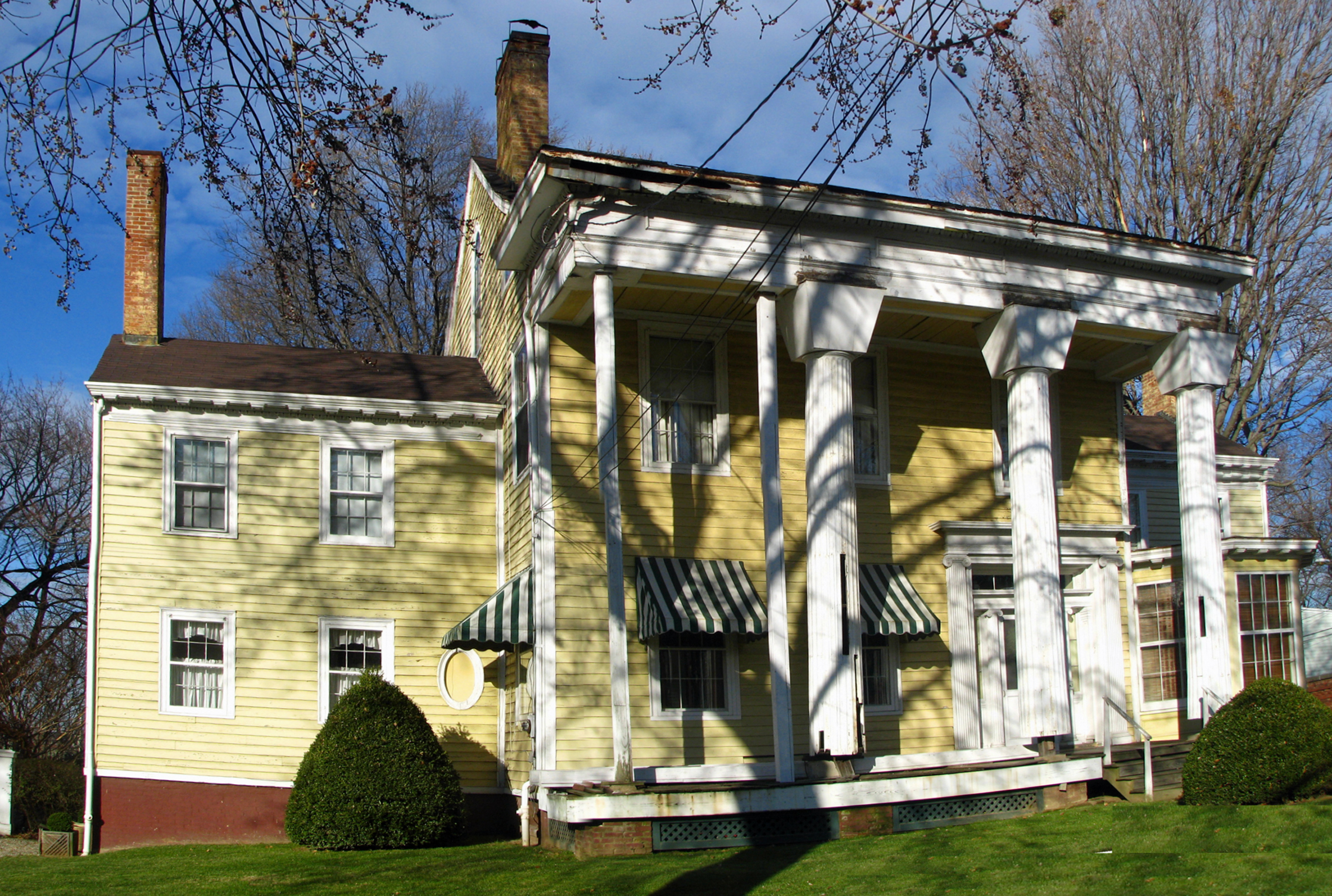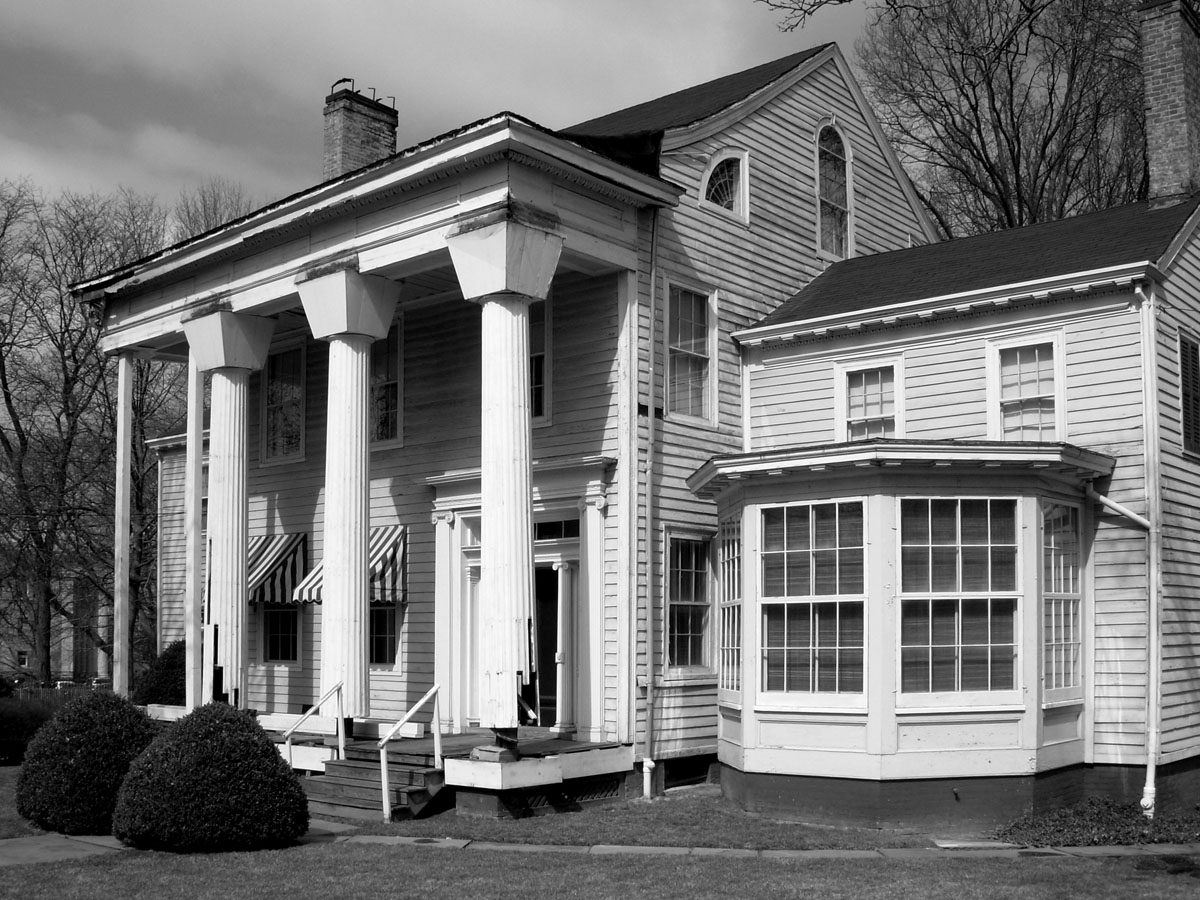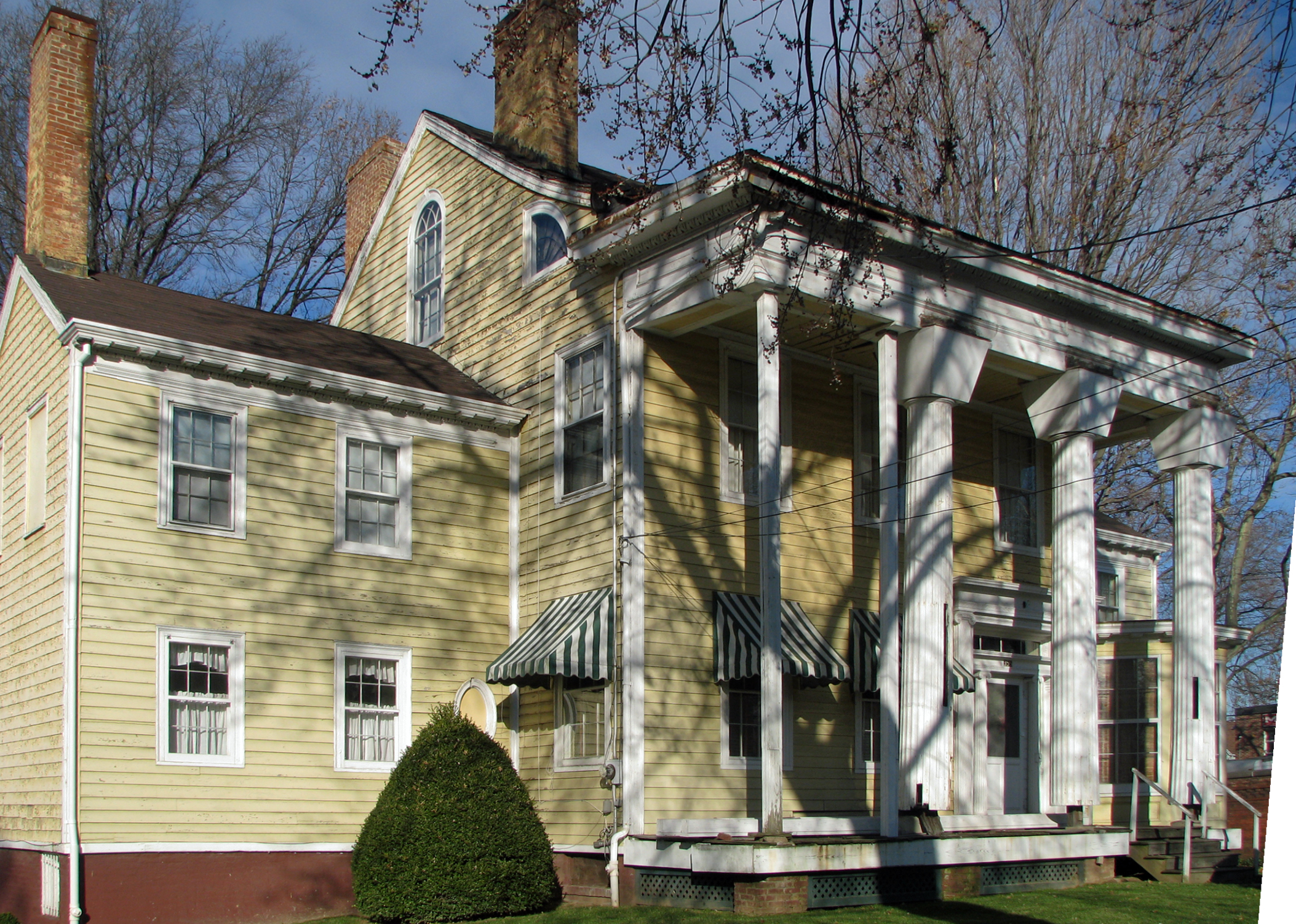Judge Jacob Tysen House
The Judge Jacob Tysen House is located at 355 Fillmore Street on the corner of Tysen Street in Livingston, Staten Island, adjacent to the Snug Harbor Cultural Center. Its original location was on Richmond Terrace, one block away from its present site; it was moved in the 1880s.
Built in 1834, the two-story wood frame features three different architectural styles displaying typical 18th century design, Federal style, and Greek Revival. Judge Jacob Tysen (1773-1848) was a judge, member of Congress from 1826 to 1828, and a New York State Senator from 1828 to 1830.
Jacob Tysen was married to Mary (Houseman) Tysen, and the couple had five children who were in their teens or older by the time this house was built. The land on which it was originally built was part of the estate of Mary's father, Richard Houseman. After Mary Tysen died in 1859, the house was advertised for auction with the following description: "The house is a two-story Frame House with Wings, built in the best manner, containing 12 rooms. The Grounds have a front on the Terrace of 120 feet and running back about 400 feet commanding a splendid view of the Bay, City, etc. Fruit, Grape, Berries, Etc., Trees and Shrubbery in abundance. Well of good water, Under Cellar, Carriage House and Out buildings."
After changing hands a few times in the 1860s and 1870s, the house was purchased by the Trustees of Sailors Snug Harbor in 1885 and moved to its current location. The Resident Physician of Sailors Snug Harbor moved into the house in 1892. Sailors Snug Harbor continued to use it well into the 20th century, and in 1947 it was converted to a two-family residence.
The Staten Island Historical Society expressed interest in the house as early as 1955 and acquired it in 1972. The house is included in the Historic American Buildings Survey (Library of Congress).
355 Fillmore Street,
Staten Island, NY, 10301
This historic structure is maintained by a year-round, live-in caretaker and is not available for touring.




